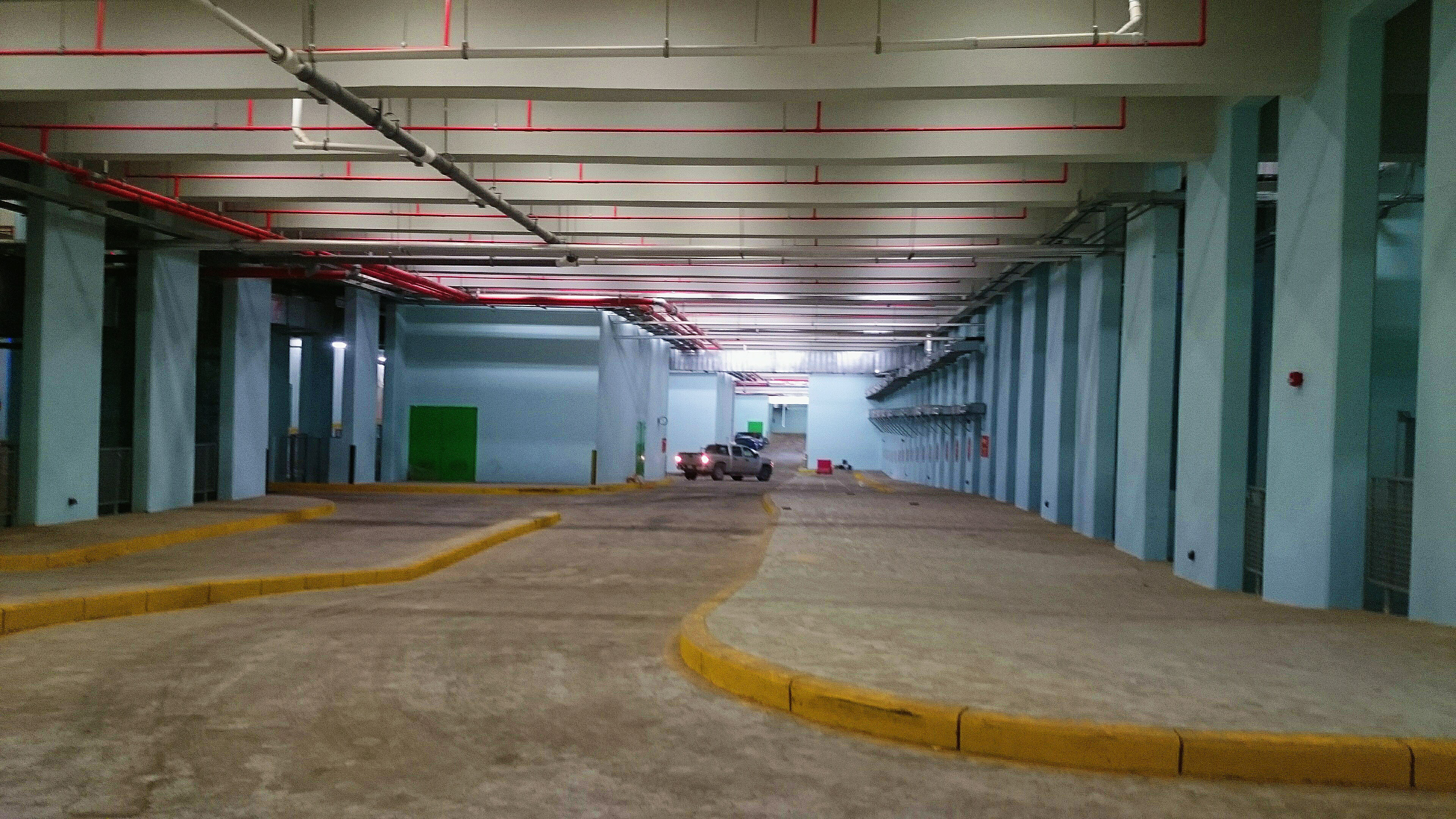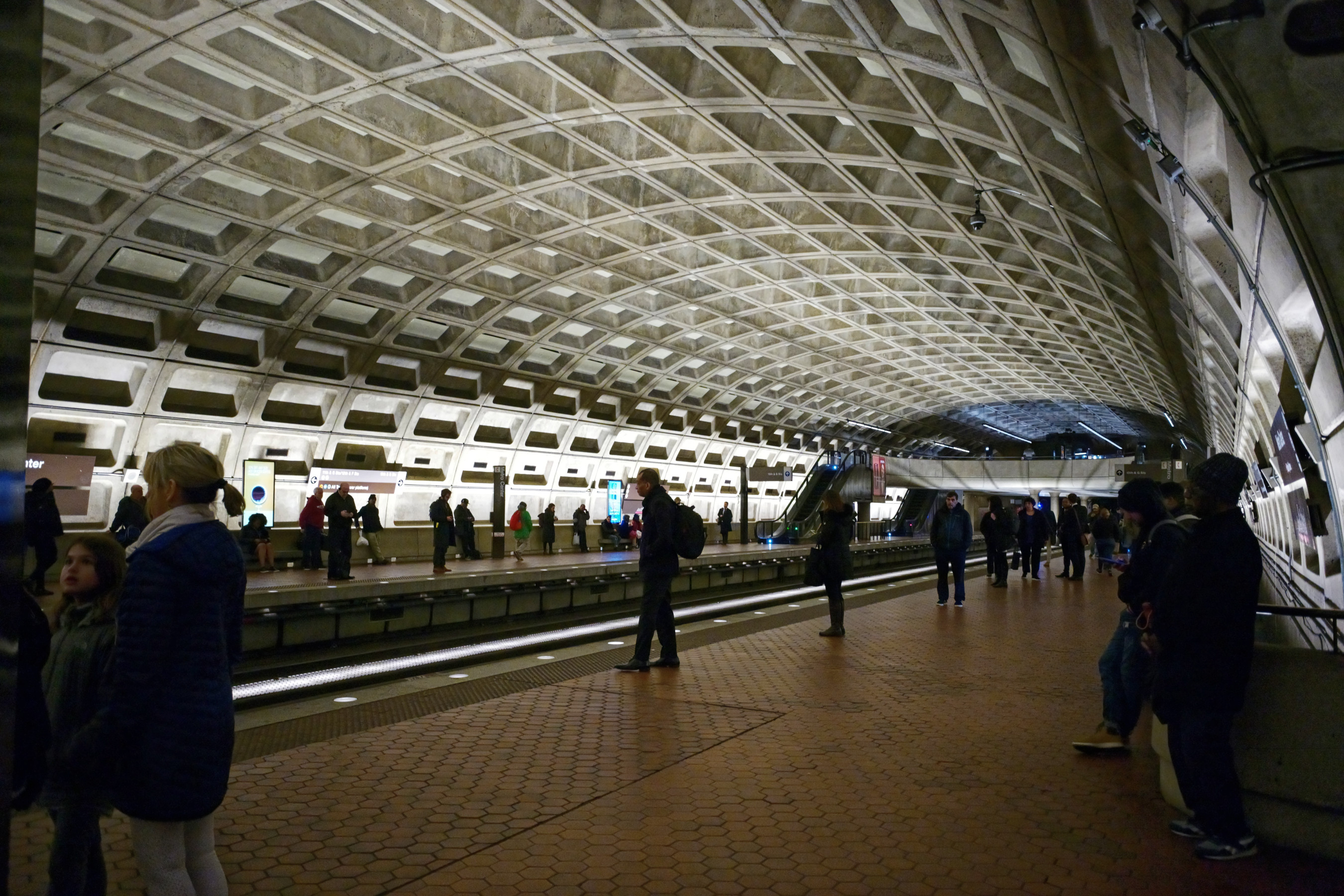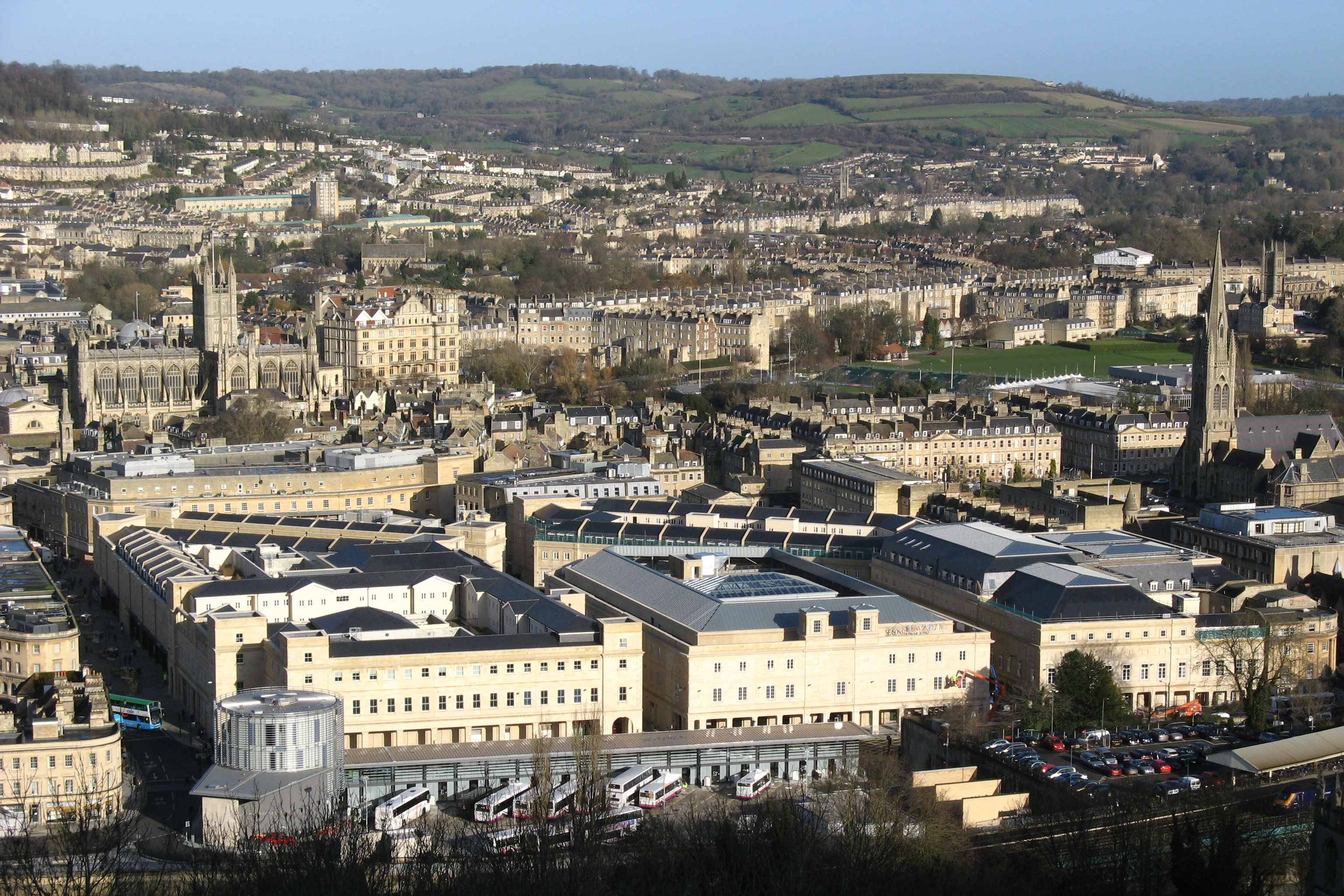|
Owen Luder
Harold Owen Luder (7 August 1928 – 8 October 2021) was a British architect who designed a number of notable and sometimes controversial buildings in the United Kingdom in the 1960s and 1970s, many in an uncompromising brutalist design, and many now demolished. He served as chairman of the Architects Registration Board and twice as President of the Royal Institute of British Architects (RIBA) in 1981–1983 and 1995–1997. He established his own practice Owen Luder Partnership in 1957, and left in 1987 to form the consultancy Communication In Construction. Luder was president of RIBA when Charles III, then Prince of Wales, attacked what he saw as the ugliness of modernism. Luder told colleagues to ignore him and just say "sod you", leading to some critics of brutalist buildings dubbing them "sod you architecture". Early life and career Luder was born in London in 1928, the son of an unknown father and Ellen Clara Mason, who married Edward Charles Luder in 1931. [...More Info...] [...Related Items...] OR: [Wikipedia] [Google] [Baidu] |
Order Of The British Empire
The Most Excellent Order of the British Empire is a British order of chivalry, rewarding valuable service in a wide range of useful activities. It comprises five classes of awards across both civil and military divisions, the most senior two of which make the recipient either a Orders, decorations, and medals of the United Kingdom#Modern honours, knight if male or a dame (title), dame if female. There is also the related British Empire Medal, whose recipients are affiliated with the order, but are not members of it. The order was established on 4 June 1917 by King George V, who created the order to recognise 'such persons, male or female, as may have rendered or shall hereafter render important services to Our Empire'. Equal recognition was to be given for services rendered in the UK and overseas. Today, the majority of recipients are UK citizens, though a number of Commonwealth realms outside the UK continue to make appointments to the order. Honorary awards may be made to cit ... [...More Info...] [...Related Items...] OR: [Wikipedia] [Google] [Baidu] |
London
London is the Capital city, capital and List of urban areas in the United Kingdom, largest city of both England and the United Kingdom, with a population of in . London metropolitan area, Its wider metropolitan area is the largest in Western Europe, with a population of 14.9 million. London stands on the River Thames in southeast England, at the head of a tidal estuary down to the North Sea, and has been a major settlement for nearly 2,000 years. Its ancient core and financial centre, the City of London, was founded by the Roman Empire, Romans as Londinium and has retained its medieval boundaries. The City of Westminster, to the west of the City of London, has been the centuries-long host of Government of the United Kingdom, the national government and Parliament of the United Kingdom, parliament. London grew rapidly 19th-century London, in the 19th century, becoming the world's List of largest cities throughout history, largest city at the time. Since the 19th cen ... [...More Info...] [...Related Items...] OR: [Wikipedia] [Google] [Baidu] |
Demolition (television)
''Demolition'' is a 2005 television series from Channel 4, which can be seen as being the reverse of the BBC's 2003 series '' Restoration''. The public were encouraged to vote for buildings which they want demolished and replaced, with 12 buildings making The Dirty Dozen. The show was shown on four days, 17 to 20 December 2005, with the "Dirty Dozen" covered along with other buildings which did not make the final 12, two of which were actually demolished either during or for filming. The show on the 20th dealt almost entirely with Cumbernauld town centre. The show was presented and narrated by Kevin McCloud, with a ''Demolition Troubleshooter'' of Janet Street-Porter, and a team of architectural and heritage experts. Since the program aired, 6 of the buildings have been demolished, while 3 have been renovated. One of the latter, Park Hill, Sheffield, is a grade II* listed building. The "Dirty Dozen" # Cumbernauld town centre # The Waterfront, Bournemouth (demolished in 2013) #N ... [...More Info...] [...Related Items...] OR: [Wikipedia] [Google] [Baidu] |
Channel 4
Channel 4 is a British free-to-air public broadcast television channel owned and operated by Channel Four Television Corporation. It is state-owned enterprise, publicly owned but, unlike the BBC, it receives no public funding and is funded entirely by its commercial activities, including Television advertisement, advertising. It began its transmission in 1982 and was established to provide a fourth television service in the United Kingdom. At the time, the only other channels were the television licence, licence-funded BBC1 and BBC2, and a single commercial broadcasting network, ITV (TV network), ITV. Originally a subsidiary of the Independent Broadcasting Authority (IBA), the station is now owned and operated by Channel Four Television Corporation, a public corporation of the Department for Culture, Media and Sport, which was established in 1990 and came into operation in 1993. Until 2010, Channel 4 did not broadcast in Wales, but many of its programmes were re-broadcast ther ... [...More Info...] [...Related Items...] OR: [Wikipedia] [Google] [Baidu] |
Get Carter
''Get Carter'' is a 1971 British gangster film, gangster thriller film, written and directed by Mike Hodges in his directorial debut and starring Michael Caine, Ian Hendry, John Osborne, Britt Ekland and Bryan Mosley. Based on Ted Lewis (writer), Ted Lewis's 1970 novel ''Jack's Return Home'', the film follows the eponymous Jack Carter (Caine), a London gangster who returns to his hometown in North East England after his brother's death. Suspecting foul play, and with vengeance on his mind, he investigates and interrogates, regaining a feel for the city and its hardened-criminal element. Producer Michael Klinger (producer), Michael Klinger optioned Lewis's novel shortly after its publication and made a deal with the ailing Metro-Goldwyn-Mayer (MGM) to finance and release the film, making ''Get Carter'' the last project to be approved by the studio's MGM-British Studios, Borehamwood division before its closure. The production went from novel to finished film in 10 months, with pr ... [...More Info...] [...Related Items...] OR: [Wikipedia] [Google] [Baidu] |
Multi-storey Car Park
A multistorey car park (Commonwealth English) or parking garage (American English), also called a multistorey, parking building, parking structure, parkade (Canadian), parking ramp, parking deck, or indoor parking, is a building designed for car, motorcycle, and bicycle parking in which parking takes place on more than one floor or level. The first known multistorey facility was built in London in 1901 and the first underground parking was built in Barcelona in 1904 (see history). The term multistorey (or multistory) is almost never used in the United States, because almost all parking structures have multiple parking levels. Parking structures may be heated if they are enclosed. Design of parking structures can add considerable cost for planning new developments, with costs in the United States around $28,000 per space and $56,000 per space for underground (excluding the cost of land), and can be required by cities in parking mandates for new buildings. Some cities such ... [...More Info...] [...Related Items...] OR: [Wikipedia] [Google] [Baidu] |
Brutalist Architecture
Brutalist architecture is an architectural style that emerged during the 1950s in the United Kingdom, among the reconstruction projects of the post-war era. Brutalist buildings are characterised by Minimalism (art), minimalist constructions that showcase the bare building materials and Structural engineering, structural elements over decorative design. The style commonly makes use of exposed, unpainted concrete or brick, angular geometric shapes and a predominantly monochrome colour palette; other materials, such as steel, timber, and glass, are also featured. Descended from Modernism, brutalism is said to be a reaction against the nostalgia of architecture in the 1940s. Derived from the Swedish phrase ''nybrutalism'', the term "new brutalism" was first used by British architects Alison and Peter Smithson for their pioneering approach to design. The style was further popularised in a 1955 essay by architectural critic Reyner Banham, who also associated the movement with the Fre ... [...More Info...] [...Related Items...] OR: [Wikipedia] [Google] [Baidu] |
Derwent Tower
Derwent Tower was a 29-storey residential apartment building in Dunston, Tyne and Wear, United Kingdom, opened in 1972. Due to its unusual shape it was nicknamed the "Dunston Rocket" during construction (even before its official Derwent Tower title) and the name remained with locals throughout its life. It was demolished in 2012. The tower was designed by the Owen Luder Partnership on behalf of Whickham urban district Council, which controlled the Dunston area of Gateshead. The original brief was for three high-rise blocks of at least 22 storeys, but due to adverse ground conditions on site the decision was made to build one tower, with the rest being low-rise blocks of two to five storeys. Despite the architect's advice against construction of a high-rise building on the site, the council were strongly in favour. Following many consultations and explanatory models of the foundations with specialists, construction of the foundations began in February 1968, and the tower was c ... [...More Info...] [...Related Items...] OR: [Wikipedia] [Google] [Baidu] |
Bath, Somerset
Bath (Received Pronunciation, RP: , ) is a city in Somerset, England, known for and named after its Roman Baths (Bath), Roman-built baths. At the 2021 census, the population was 94,092. Bath is in the valley of the River Avon, Bristol, River Avon, west of London and southeast of Bristol. The city became a UNESCO World Heritage Site in 1987, and was later added to the transnational World Heritage Site known as the "Great Spa Towns of Europe" in 2021. Bath is also the largest city and settlement in Somerset. The city became a spa with the Latin name ' ("the waters of Sulis") 60 AD when the Romans built Roman Baths (Bath), baths and a temple in the valley of the River Avon, although List of geothermal springs in the United Kingdom, hot springs were known even before then. Bath Abbey was founded in the 7th century and became a religious centre; the building was rebuilt in the 12th and 16th centuries. In the 17th century, claims were made for the curative properties of water ... [...More Info...] [...Related Items...] OR: [Wikipedia] [Google] [Baidu] |
SouthGate, Bath
SouthGate is a shopping centre in Bath, Somerset, England, It is home to over fifty shops, ten restaurants, 99 homes and an 860-space underground car park. It replaced a shopping centre which was demolished in 2007. The new centre developed by Multi Corporation UK is more than double the size of the previous space and provides 37,000 square metres of retail space, 3,500 m2 of leisure space, 2,300 m2 of restaurant space plus 99 residential units. It was designed by Chapman Taylor to mimic Georgian architecture with a Bath stone facade. The first owners were the Aviva Investors. In 2013 British Land purchased a 50% stake for £101 million, leaving Aviva Investors as owners of the other 50%. The development won the Georgian Group Architectural Giles Worsley Award for a New Building in Georgian Context in 2010. History Site On the site prior to this development was the Southgate Shopping Centre designed by Owen Luder, architect of the Tricorn Centre in Portsmout ... [...More Info...] [...Related Items...] OR: [Wikipedia] [Google] [Baidu] |
Gateshead
Gateshead () is a town in the Gateshead Metropolitan Borough of Tyne and Wear, England. It is on the River Tyne's southern bank. The town's attractions include the twenty metre tall Angel of the North sculpture on the town's southern outskirts, The Glasshouse International Centre for Music and the Baltic Centre for Contemporary Art. The town shares the Gateshead Millennium Bridge, Millennium Bridge, Tyne Bridge and multiple other bridges with Newcastle upon Tyne. Historic counties of England, Historically part of County Durham, under the Local Government Act 1888 the town was made a county borough, meaning it was administered independently of the county council. In the 2021 United Kingdom census, 2021 Census, the town had a population of 196,151. Etymology Gateshead is first mentioned in Latin translation in Bede, Bede's ''Ecclesiastical History of the English People'' as ''ad caput caprae'' ("at the goat's head"). This interpretation is consistent with the later English attes ... [...More Info...] [...Related Items...] OR: [Wikipedia] [Google] [Baidu] |
Lewisham
Lewisham ( ) is an area of southeast London, England, south of Charing Cross. It is the principal area of the London Borough of Lewisham, and was within the Historic counties of England, historic county of Kent until 1889. It is identified in the London Plan as one of 35 major centres in Greater London, with a large shopping centre and street market. Lewisham had a population of 60,573 in 2011. History The earliest written reference to Lewisham – – is from a charter from 862 which established the boundaries with neighbouring Bromley. Lewisham is sometimes said to have been founded, according to Bede, by a pagan Jutes, Jute, Leof, who settled (by burning his boat) near St Mary's Church (Ladywell) where the ground was drier, in the 6th century, but there seems to be no solid source for this speculation, and there is no such passage in Bede's history. As to the etymology of the name, Daniel Lysons (antiquarian), Daniel Lysons (1796) wrote: :"In the most ancient ... [...More Info...] [...Related Items...] OR: [Wikipedia] [Google] [Baidu] |








